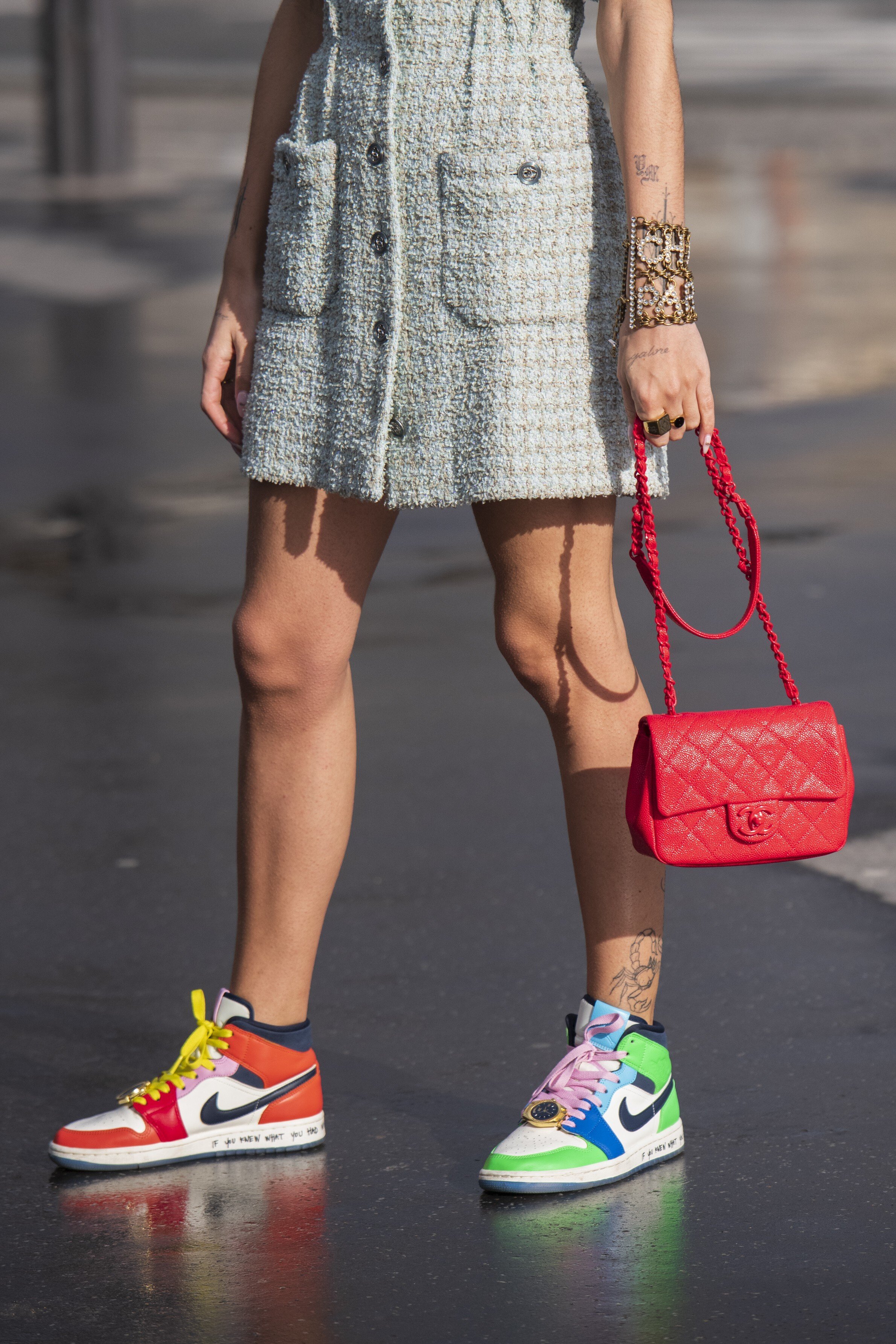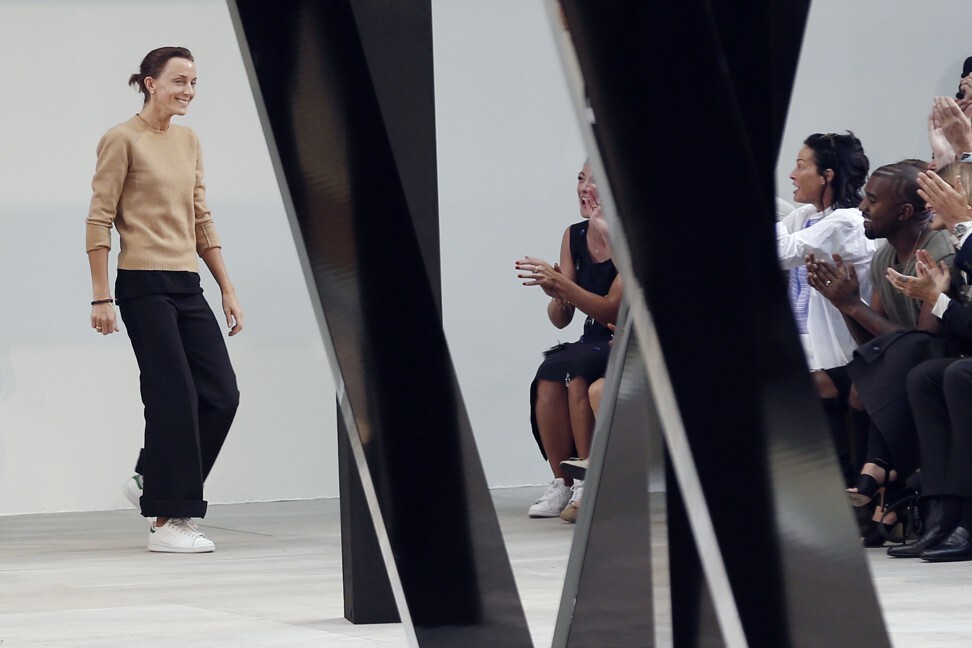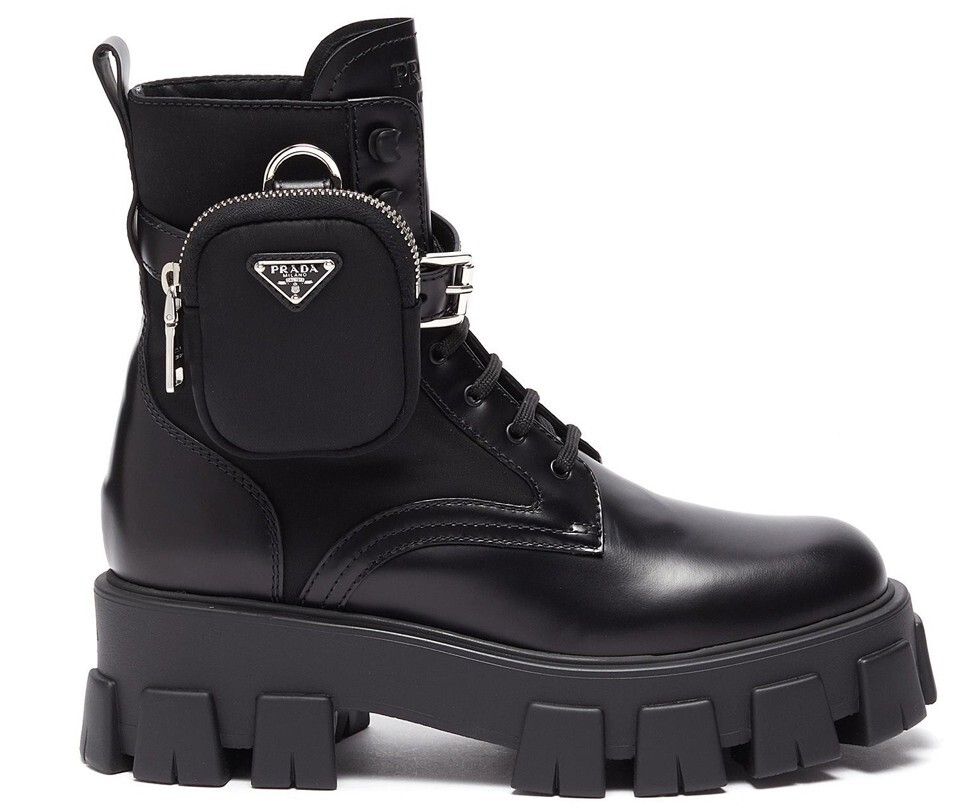
- Changing attitudes, the rise of athleisure and a rejection of patriarchal ideals of femininity have caused consumers embrace the comfort of trainers and boots
- Younger consumers have rejected stilettos as a symbol of feminine power, and older women have followed in their footsteps
Only one thing dates television series Sex and the City more than Carrie Bradshaw’s ability to rent an Upper East Side apartment on the back of writing a weekly newspaper column, and that’s her shoes.
The show made Manolo Blahnik a household name, but watch it with a 2020 eye and laugh uproariously at the idea that anyone would pick up their dry cleaning, go to a cabin in the woods or navigate an airport in six-inch heels.
From 1998 to 2004, Sex and the City fed us the line that to be a glossy Manhattanite was to wear skyscraper stilettos to the supermarket, around the swimming pool and even with pyjamas in a New Year’s Eve snowstorm. Vertiginous heels became bywords for sex and power and remained so until the footwear revolution of the past few years.
Now we have done a full 180, and there are more glossy trainers, battered Dr Martens and designer bovver boots than heels of any height at fashion week. The punk boot is a hot buy, worn with sexy skirts and plenty of lipstick, while the look of the summer has been floaty, floral, feminine dresses with no-nonsense trainers.
“There has been a move away from this idea that, in order for women to feel powerful or feminine, they need to be wearing heels,” says Elizabeth von der Goltz, global buying director for luxury online retailer Net-a-Porter.
“A pair of white sneakers with a trouser suit can do the same. Sneakers are also able to offer a lot more than they used to for your wardrobe. Look at brands like Veja and their sustainable credentials – alongside their unique aesthetic, they have a strong stance on sustainability and are also so practical and comfortable.”
It is a transformation my feet and I have welcomed. In my 20s, I was a fashion writer at Glamour magazine and each morning I would hide behind the bins outside my office, furtively replacing my flats with whichever stiletto I had got my hands on at a press sale. God forbid my editor would think I commuted in anything other than instruments of torture.
Going into a bar now feels completely different to how it did a decade ago because all the women are in flatsMary Leigh Bliss, chief content officer, Ypulse
Fast forward 10 years and I can’t remember the last time I wore heels. At a wedding recently, a friend asked if wearing flats with my Rejina Pyo dress made me feel less glamorous. As I chatted without worrying whether I was sinking into the lawn, or danced until I was hot without stopping because my feet hurt, I decided maybe it was our definition of glamour that needed to change.
The fashion industry certainly thinks so. In Paris, London, Milan and New York – not to mention Seoul and Shanghai – the click-clacking of a thousand heels hitting the floor has been silenced.
Editors and buyers are suddenly finding they can buy an oat-milk flat white and walk between shows, rather than get stuck in a traffic jam on the Rue de Rivoli because tottering a kilometre up the road is out of the question.
The front row is ablaze with Church’s brogues, Gucci loafers, Bottega Veneta biker boots and Balenciaga and Chanel trainers – and unless they’ve drunk too much free champagne, nobody is wobbly on their feet.

The numbers reflect this shift. Analysts at fashion search platform Lyst noted a 25 per cent year-on-year decrease in sales of stilettos in February while sales of boots with heels dropped 40 per cent. Last year, overall sales of heels were down 12 per cent in Europe while those of trainers rose 37 per cent. According to Net-a-Porter, trainers were the most popular category of women’s footwear last year.
“Our women’s shoe offer has grown exponentially over the past five to 10 years,” says Eleanor Robinson, the director of accessories at British department store Selfridges.
“With flat shoes and sneakers driving growth […] there has been a reassessment of women’s priorities and expectations when it comes to shoes, and a marked shift when it comes to the concept of dress codes in certain work or social environments.”
In Asia, Adidas is currently the leader in the Chinese shoe market, where sales have topped 200 billion yuan (US$29.9 billion) a year – and the Yeezy collaboration in particular has proved popular. Luxury brands have also been launching sportswear products, such as Balenciaga’s Triple S trainer, to strike a chord with affluent Chinese millennials.
“This is so much more than just a trend,” says MaryLeigh Bliss, the chief content officer at Ypulse, a New York-based youth marketing research firm. “Just anecdotally I can say that going into a bar now feels completely different to how it did a decade ago because all the women are in flats – and the figures from our surveys reflect that.”

“Gen Z and younger millennials prioritise comfort above all else and I don’t see them ever embracing stiletto culture,” she continues. “That attitude has affected older women as well, who are realising they don’t have to put themselves through the pain. With the rise of dad shoes and sneakers, we have seen a new culture grow, with young consumers saying they have fatigue with perfection.”
In the few short years since trainers became a versatile staple off the sports field, they have been embraced by wildly diverse groups, including the preppy blazer brigade, influencers of all stripes and high-fashion stylists. Tennis icon Stan Smith, when discussing the eponymous Adidas trainer his name is famous for, said, “Now it’s worn for just about anything except tennis.”
The trend kicked off in 2010, when designer Phoebe Philo – the then denizen of cool at Celine – started pairing her cigarette trousers and polo necks with Stan Smiths.
Ten years ago, stilettos were the status accessories of choice. But it’s just not cool any moreEleanor Robinson,director of accessories, Selfridges
A few years later and the front row had transformed from the ankle down. Gone were Jimmy Choo black stilettos and Christian Louboutin scarlet soles and in their place were battered trainers and flat ankle boots.
Shopping malls had caught on by 2015, and since then, luxury boutiques and big retailers alike have been packed with flatteringly slimline sneakers in ice cream colours, designed to be worn with everything from jeans to silk dresses, to work and to festivals, as well as ballet shoes and Birkenstocks.
“For me, it began when mass sport brands launched collaborations with luxury fashion brands, opening up sneaker culture to a new range of customers,” says Sara Wong, the director of merchandising at Hong Kong department store Lane Crawford.

“From when Adidas collaborated with Raf Simons to more recent successful crossovers like Adidas with Yeezy and Nike with Sacai, sneakers continue to represent a large portion of our total footwear business. It’s become a real staple in our portfolio and a case could be made that it’s one of the bestselling footwear categories pre- and post-Covid.”
Trends come and go – and vertiginous heels might be back before we know it, but I doubt it. Yes, stilettos are undeniably leg lengthening and slimming, and, yes, they tighten bottoms and calves like nobody’s business.
But as young women proudly describe themselves as feminists, wearing something uncomfortable in the quest to fulfil an ideal of female attractiveness seems, well, old-fashioned. (As does leaving a party early because your feet hurt while your partner spends another hour on the dance floor.)
Why white trainers were the shoe of the decade
“Ten years ago, stilettos were the status accessories of choice,” says Robinson. “But it’s just not cool any more. Young women now don’t see the point in putting themselves through the discomfort. Back then it was cool; now it’s not – that’s the difference.”

More celebrities were papped last year in Lululemon leggings than most other pieces of clothing, and the rest of us started meeting for brunch, cinema trips and picnics in clothes that would once have been hidden in a sweaty gym bag.
As wellness became a status symbol, it seemed counter-intuitive to change out of our leggings for social occasions, particularly if the barre bod needed admiring. And the only shoe you could wear with them? Trainers.
“The modern-day woman has realised she can be extremely feminine and chic while also being comfortable,” says Net-a-Porter’s von der Goltz. “And now she’s seeking shoes to wear from day-to-night rather than having to switch styles from one occasion to the next. Sneakers now combine both fashion and function.”
Nightclubs, restaurants and bars rapidly updated their clothing policies, knowing that if they did not, they would be shunning their best-dressed clients. Women lost a few inches in height but they gained hours of stamina and discovered dancing in air-cushioned trainers is infinitely more fun than wobbling about in heels.
Gen Z “It” girls such as the Hadid sisters, Kendall Jenner, Zhang Dayi, Hailey Baldwin and Kaia Gerber came out in Nike Air Force 1s and New Balance 327s. In their block trainers and heavy boots they shifted the aesthetic again, allowing young women to experiment with ultra-short shorts, see-through slip dresses and crop tops in ways that felt provocative but also powerful.

Lockdown has only exacerbated this move away from heels. In the past four months, Meghan Markle has been photographed out and about in Veja trainers; Kate Moss and every Parisian celebrity has been spotted in Chanel two-tone ballet flats; Alexa Chung has said her go-to footwear is an actual ballet shoe from balletbeautiful.com; and most influencers have invested in Birkenstocks.
Of course, different parts of the world embrace certain trends with greater alacrity than others. When I moved from Hong Kong back to London, in 2016, I was surprised by the number of box-fresh white trainers and Chelsea boots I was seeing on nights out, as back in Sheung Wan I had been dutifully buckling up my heels.
Some of it comes down to geography – London is bigger than Hong Kong, the weather is worse and taxis are more expensive – and some of it is culture. While Hongkongers might not be quite so happy to toss away their stilettos, they, too, are welcoming a lower heel.
“I think heels will always be cool in Asia as the market embraces dressing up and looking your best at all times,” says Lane Crawford’s Wong.
“But the pandemic has forced people indoors and the demand for high heels has certainly suffered. The trend has shifted more into practical footwear to align with the current lifestyle, shown by how our customers now want sneakers and sport sandals.”
When we do go back to work, many women will be choosing low, chunky block-heeled boots, mid-height slingbacks or the sort of trainers that barely register as sports shoes – covered in sequins or made in opulent metallic shades more suited to a gala dinner than any sort of exercise routine.

One thing nearly all footwear retailers seem to agree on is that while heels may not be dead, gravity-defying stilettos are gasping for breath. And showing that even the old guard can change, Manolo Blahnik and Christian Louboutin are now focusing nearly all their efforts on heels three inches and below.
It has been one of the most important fashion shifts of the past decade. But only time will tell whether high heels will one day be seen as a successor to the corset and the last gasp of a patriarchal approach to women’s clothing – or whether they were tools of female empowerment at a time when we needed it most.
“I don’t know who invented high heels, but all women owe him a lot,” Marilyn Monroe famously said. That may once have been true, but young women have now decided the debt has been paid.

